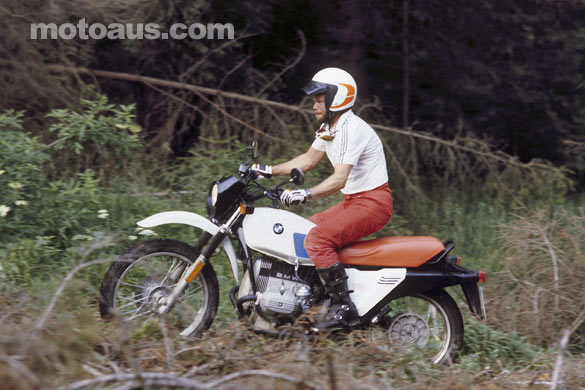BMW’s 500,000th BMW GS has come off the production line.

The half a million mark has been reached in BMW’s GS production since its inception in 1980.
Whether in off-road racing or as the ultimate “any road” tourer, the BMW GS models have become firmly established on the market over a period of three decades, with the 500,000th BMW GS – an R 1200 GS- coming off the production line in Berlin on May 12th, 2009.
The BMW GS has been developed continuously since 1980, shaping the image of BMW Motorrad more than any other series. Originally the traditional 2-cylinder flat twin “boxer” engine was reserved solely for the BMW GS models, but in 2000 a single cylinder GS was introduced, the F 650 GS – a smaller, lighter bike which continues to be produced as the G 650 GS. In 2008, the successful BMW GS range was also supplemented with the F 650 GS and the F 800 G with 2-cylinder in-line engine.

BMW Motorrad looks back over a long tradition of off-road racing. In 1980, Rolf Witthöft won the European Off-Road Championship on an 800 cc BMW, while the R 80 G/S premiered in the same year with what now seems a rather modest 50 bhp. With its innovative chassis technology and low weight of just 186 kg, it not only displayed brilliant off-road qualities but was also reliable for everyday riding and an ideal travel companion. One eye-catching novelty was the single-sided swing arm, called BMW Monolever, for rear wheel control. With the highest capacity engine for an off road motorcycle at the time, the bike founded an entirely new market segment: that of the large-capacity adventure bikes.
In 1981 the French desert specialist Hubert Auriol won the motorcycle rating of the Paris-Dakar Rally, repeating his success in 1983. The flat twin models continued to be based on serial production models and were victorious again in 1984 and 1985 when former motocross champion Gaston Ranier from Belgium left the competition behind him.
The R 80 G/S and the subsequent R 100 GS became outstanding hits in the BMW range, enjoying great popularity among long-distance motorcyclists. They proved themselves to be extremely robust, reliable and easy to handle. This is why the GS turns up in just about every corner of the earth, no matter how remote.
In the course of the model revision in 1987, the R 80 GS and R 100 GS were presented with the revolutionary double-jointed swing arm (BMW Paralever) and patented cross-spoke tubeless wheels. At the IFMA Cologne in 1988, BMW Motorrad then presented the R 100 Paris – Dakar with rally front section, engine guard and 35-litre fuel tank. This model was based on a racing bike on which Eddy Hau from Munich had won the marathon class for private riders at the Dakar rally.

To mark the tenth anniversary of the popular BMW Adventure bike the R 80 GS and R 100 GS were given a new look in 1990, geared towards the style of the Paris-Dakar version.
Meanwhile, BMW motorcycles continued to do well in off-road racing. For example, Jutta Kleinschmidt entered the Cape Town rally as a private competitor with her close-to-production BMW R 100 GS in 1992 and crossed the finishing line as winner of the women’s category.
In 1993 BMW presented a new series with a 4-valve flat twin engine. After this the model range was expanded in rapid succession. In September the R 1100 GS with a large 25-litre fuel tank and comfortable dual section seat caused a stir at the IAA in Frankfurt. In addition to the new 4-valve flat twin engines, BMW also presented the new Telelever front suspension system.
In addition to the 80 bhp R 1100 GS, the F 850 GS (70 bhp) came out in 1998. In subsequent years, the GS engines continuously increased in capacity and thus in output and torque, too. Today’s top model, the BMW R 1200 GS, now has an output of 105 bhp and a maximum torque of 115 Nm.
The “big” GS with the classic flat twin engine is the most popular bike in BMW Motorrad’s model range today. Last year alone, 35,305 new BMW R 1200 GS and R 1200 GS Adventure motorcycles were sold to customers all over the world.
In Australia and New Zealand, the GS model range accounts for approximately 50 per cent of the entire volume, with a loyal following of passionate enduro riders.
Australia’s love affair with the GS gave rise to the dedicated BMW GS Safari programme (established in 2005), and also instigated the BMW Motorrad GS Adventure off-road training programme, where BMW GS owners have the opportunity to hone their adventure riding skills in order to get the most out of their motorcycle.
